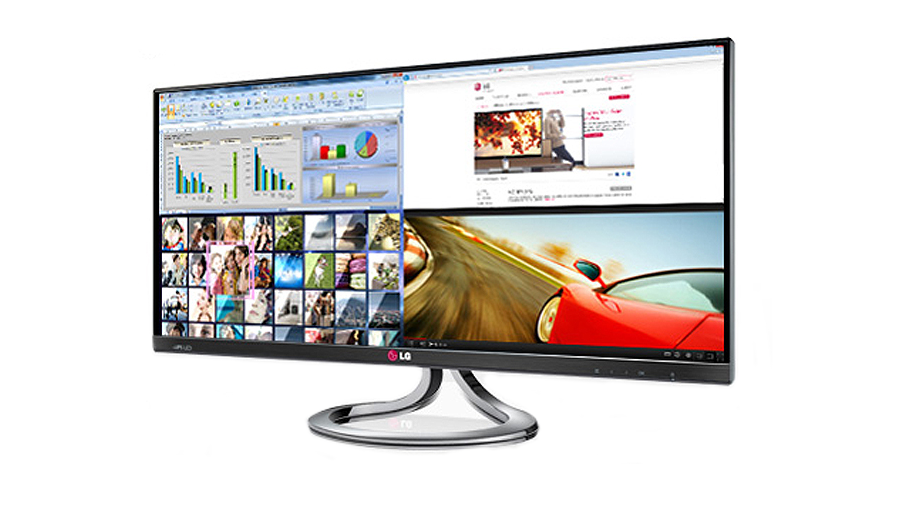Wide appeal: are 21:9 monitors perfect for business and pleasure?
LG, AOC, Philips and Dell are aiming for cinematic perfection

If you can hear an intermittent beeping noise in the background while reading this article - don't be alarmed - that's just the sound of me doing a slightly awkward U-turn.
That's right - I've gone from being thoroughly disgusted with cinematic 21:9 monitors to furiously navigating Google's shopping pages to land a killer deal. I'm even gearing up to auction my trusty 27-inch iMac on eBay to stump up enough enough cash to splash out on one. But why the change of heart?
After giving it some thought, I think that these might be the most enticing monitors to date for PC users that need a single panel for business use and gaming (or general entertainment). If you pour over Excel spreadsheets during the day and command fleets of tanks in Battlefield 3 at night, one look at these ultra-wide wonders and the appeal of 16:9 suddenly starts to fade.
Twin peaks
First up, let's talk productivity. Most 21:9 panels measure 29 inches from corner to corner and pack a 2,560 x 1,080 pixel resolution - that's 33% wider than standard full-HD displays.
It gives you plenty of scope to position browsers and apps side-by-side without having to resort to a multi-monitor setup that places a distracting bezel down the middle.
To further aid this, models from manufacturers such as LG, Philips and Dell come with split-screen software to further assist with making the most of monitor real estate on a PC or Mac, allowing you to arrange content in a number of ways.

LG's 29EA93 stands out for its Dual-Link Up mode, which allows up to two other devices' (whether that's a computer, smartphone or Blu-ray player) contents to be displayed on separate halves of the screen simultaneously, meaning no more craning necks to see each others' laptop screens during business meetings.
Sign up to the TechRadar Pro newsletter to get all the top news, opinion, features and guidance your business needs to succeed!
I've avoided 1,920 x 1,080 monitors for their lack of vertical height in the past (opting for 2,560 x 1,440 or even a 16:10 resolution like 1,920 x 1,200 instead), but I feel that these new cinematic monitors are more appealing than their full-HD counterparts because of the extra horizontal pixels to play with.
Clearly everybody will not agree. Cinematic panels are still the equivalent of monitor Marmite, and multimedia professionals aren't likely to give up their 30-inch panels any time soon. There is, however, another crowd of PC users who may be attracted to the aspect ratio: gamers.
Games master
I mentioned earlier that 21:9 monitors are ideal for those that need a panel for business and PC gaming or entertainment, and it's an important point make. If you want a panel purely for productivity, a 27-inch 1,440p monitor would give you far more real estate for the same price (or less) than a cinematic offering.
And if you're a dedicated gamer, a single 120Hz 1,080p monitor would be a cheaper option and would offer more clarity with less input lag (under 1ms) than a 21:9 panel (most are around 5ms). That said, 21:9 monitors are handy in a gaming fight with some nifty features of their own.
First up, running at 2,560 x 1,080 provides a unique cinematic experience on games that support the resolution (Battlefield 3 does, but GTA IV does not, and some games like Skyrim require tweaks). And in first person shooters you'll get a wider field of view (FOV), allowing you to see more of the map and enemies before they see you. Racing games are more simulator-like and immersive.

Performance gains
But one of the biggest gaming advantages with a 21:9 monitor over a larger 1,440p panel is that you'll get a high level of immersion without needing two or more graphics cards (in SLI or Crossfire) to power huge VRAM-hungry resolutions.
At 2,560 x 1,080, you're only running games slightly above 1,920 x 1,080, meaning a single graphics card would do the job. Of course, you're still running games above full HD, so the more memory your card has the better (2GB is currently the recommended amount, but that's expected to creep up to 3GB or even 4GB in the coming years).
A solid performer such as an Nvidia GTX 770 will be enough to play most games on a 21:9 monitor with most details tuned up. There will be exceptions, of course, as there's always a stubbornly demanding title such as Crysis waiting to churn up your PC's guts.
Final thoughts
I initially turned my nose up at cinematic 21:9 monitors, but after coming to terms with 2,560 x 1,080 for productivity and taking the gaming benefits into consideration (I'm currently looking at getting a new PC with a single, powerful graphics card), a cinematic display makes a whole heap of sense.
You may not agree, and if that's the case, there are plenty alternative setups out there - from massive HDTVs to multi-monitor EyeFinity setups and even good old 4:3 panels for the traditionalists. Oh, and it should be pointed out that 21:9 monitors leave big black letterboxes when used with games consoles. Sorry, joypad fans.
